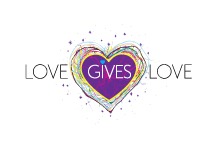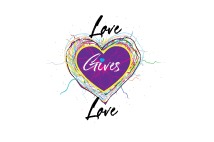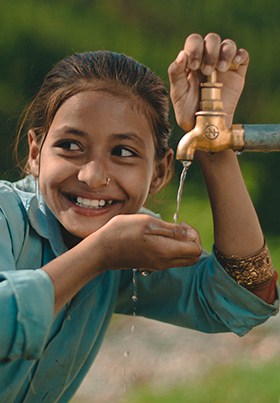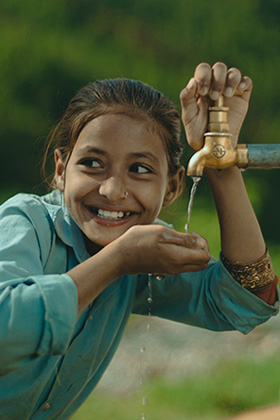The Social Inclusion Working Group at Sightsavers has welcomed its first inspiring speaker, Lady Jean Wilson, whose husband, Sir John Wilson, founded Sightsavers in 1950.
The working group, which has members across all departments of Sightsavers, aims to make sure everything we do both in terms of our programmes and operations is fully inclusive and accessible to everyone.
Lady Wilson gave an informative talk on the history of Sightsavers’ work in inclusion. She began telling us about how her husband Sir John was blinded at the age of 12 by an accident in a chemistry class at school but always regarded his blindness as “a confounded nuisance – nothing more”.
Victorian attitudes
After gaining a degree at Oxford University, Sir John went to work at the National Institute for the Blind, but found the organisation was very Victorian in its attitudes, considering blind people to be its beneficiaries, to be shut away making baskets and brooms in sheltered workshops.
During the Second World War, Sir John realised that the factories were short of workers, so he visited a number of factories to establish what work could be carried out by blind people. By the end of the war, more than 3,000 blind people were working in factories around the UK earning a proper wage. This was a huge step in employment inclusion for blind people.
Photo 1: Lady Wilson describes Sightsavers’ decades of success in working for inclusion, watched by CEO Dr Caroline Harper. Photo 2: Lady Wilson with Tracy Vaughan Gough, Sightsavers’ Programme Development Advisor on Social Inclusion and Disability (left) and Kate Bennell, Sightsavers’ Organisational Inclusion Coordinator (right).
In 1946, Sir John was invited to go on a nine-month tour of what were then the British colonies across Africa. He was appalled by the conditions in which he found blind people living. He realised that in Africa, blind children were considered utterly useless, blind men were dependent on their relations and blind women were seen as not fit for marriage. The attitude in many countries at this time was: “You are blind so you are no good. You bring shame and disgrace to your family and community.”
When Sir John returned to the UK he was determined to do something about this inequality, so he founded the British Empire Society for the Blind, which later became the Royal Commonwealth Society for the Blind, and is known today as Sightsavers. He decided that the Society should be concerned with the rights of blind people – and in particular to help take away the stigma of being blind in Africa – through social inclusion, training and education.
In the 1950s, Sir John and Lady Wilson started farm training centres to teach blind men how to farm a small plot of land. This training enabled them to provide for themselves and their families, while gaining dignity and respect in their village communities. This training gave independence to thousands of men from Africa, India and what was then Malaya.
Pioneers of integrated education
Sir John felt that education for children with disabilities was a major step towards social inclusion. At the time, special schools were the norm in Europe, but Sir John and Lady Wilson had heard of integrated schools in America. Lady Wilson, herself a teacher, went to study these and came back realising that this approach would be the best way forward in Africa. The couple then started an integrated education project for blind children in Uganda.
This proved challenging, as the parents of the blind children could see no reason why their children should go to school. So a team from the organisation held a demonstration to show the parents what their children would gain by going to school and learning to read braille. They did this by arranging to climb Mount Kilimanjaro in 1969 with seven blind men from Kenya, Uganda and Tanzania. Queen Elizabeth II sent a telegram of congratulations following this amazing event, which was covered in newspapers across Africa. This led to the blind children coming to school, and our first inclusive education project had been achieved.
University role model
After some years, a blind boy in Sierra Leone was ready to go to university – the first in his country to reach this position. He passed all the entrance examinations, but when the university realised he was blind they withdrew their offer. Sir John and Lady Wilson intervened, went to meet the chancellor and managed to reverse the decision. The young man did so well that the door was opened for other blind students, thus proving that blind people could be role models for others – another inclusive education project completed.
Lady Wilson closed her talk on inclusion with a quote from Sam Campbell, who was the principal of Milton Margai School in Sierra Leone for 40 years. In 1971 he was invited to take part in the inauguration of the Gambia Society for the Blind. He began by quoting Dr Kenneth Jernigan, President of the National Federation of the Blind from 1968 to 1986: “We have won by finding our own voice, by finding our own direction and our own doctrine that the blind are normal people who cannot see. Blindness is but a challenge to make a new life.”
Sam Campbell added: “Up to now it has not been possible for blind children to go to school, for the blind to work and earn a living and to participate in social activities. Thanks to the government of the Republic of Gambia, the Gambia Society for the Blind and The Royal Commonwealth Society for the Blind, these things can now become possible and the Gambian blind will soon take their rightful places in society as useful citizens.”
This history on the work on social inclusion for severely sight-impaired people and how Sir John and Lady Wilson have helped them has provided much thought-provoking matter for the Social Inclusion Working Group to consider going forwards.
Kate Bennell is Sightsavers’ organisational inclusion coordinator. Her role includes acting as secretary for our social inclusion working group and working towards ensuring that everything we do is accessible and inclusive for everyone. Kate has impaired vision and has experienced being excluded due to her disability.





